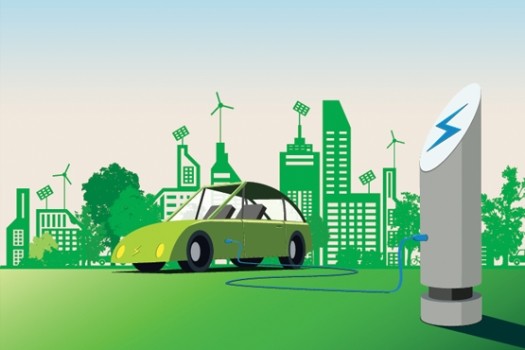As industries shift toward eco-friendly solutions, sustainable utility vehicles are gaining popularity in both commercial and public sectors. These vehicles offer a cleaner, more efficient alternative to traditional gas-powered options, helping reduce carbon footprints while improving operational efficiency. This article explores how sustainable utility vehicles are transforming work and transport, their benefits, and what the future holds for this innovative industry.
1. What Are Sustainable Utility Vehicles?
Sustainable utility vehicles (SUVs) are eco-friendly alternatives to conventional work and transport vehicles. They typically run on electric, hybrid, or alternative fuel sources, significantly reducing greenhouse gas emissions. Unlike traditional gas-powered utility vehicles, these models are designed to be energy-efficient, cost-effective, and environmentally responsible.
There are three primary types of sustainable utility vehicles:
- Electric Utility Vehicles (EUVs): Fully battery-powered with zero emissions.
- Hybrid Utility Vehicles (HUVs): A combination of electric and fuel-based engines, offering improved efficiency.
- Alternative Fuel Vehicles (AFVs): Run on biodiesel, hydrogen, or compressed natural gas (CNG), providing lower emissions than conventional fuels.
2. Environmental and Economic Benefits of Sustainable Utility Vehicles
One of the primary advantages of sustainable utility vehicles is their ability to reduce environmental impact. Since many of these vehicles run on clean energy sources, they help minimize carbon emissions, making them an excellent option for companies looking to align with sustainability goals.
Beyond environmental benefits, these vehicles also provide economic advantages:
- Lower Fuel Costs: Electricity and alternative fuels are often more affordable than gasoline or diesel.
- Reduced Maintenance Expenses: Fewer moving parts mean less wear and tear, lowering repair costs.
- Government Incentives: Many regions offer tax credits, grants, or rebates for adopting eco-friendly vehicles.
By transitioning to sustainable utility vehicles, businesses and municipalities can achieve long-term cost savings while reducing their carbon footprint. To further enhance sustainability efforts, businesses can also compare business energy options to reduce their overall carbon footprint and operational costs.
3. Industries Benefiting from Sustainable Utility Vehicles

Many industries are incorporating sustainable utility vehicles into their operations, including:
- Construction and Agriculture: Electric and hybrid models are being used for hauling materials, transporting equipment, and handling tasks in confined areas where emissions control is necessary.
- Logistics and Delivery Services: Many last-mile delivery companies are switching to electric utility vehicles to cut emissions and fuel costs while improving operational efficiency.
- Public Sector and Municipalities: City maintenance crews, park services, and waste management are integrating sustainable utility vehicles into their fleets to support green initiatives.
As more industries recognize the benefits, sustainable utility vehicles are becoming a standard for efficient and environmentally responsible operations.
4. The Role of Utility Vehicles in Work and Transport
Utility vehicles play a crucial role in a variety of work and transport applications. Whether used for industrial purposes, delivery services, or municipal tasks, these vehicles must be durable, efficient, and adaptable.
Modern sustainable utility vehicles offer key features such as:
- Advanced Battery Technology: Providing extended range and fast-charging capabilities.
- Durability and Performance: Designed for heavy-duty tasks with robust builds.
- Smart Technology Integration: Many vehicles now include GPS tracking, remote diagnostics, and energy-efficient driving modes.
Companies looking to incorporate sustainable utility vehicles into their fleet should research reliable manufacturers and service providers. To explore efficient and eco-friendly vehicle options, contact Westward Industries, a leader in sustainable utility vehicle solutions.
5. Challenges and the Future of Sustainable Utility Vehicles

While sustainable utility vehicles offer numerous benefits, some challenges remain in their widespread adoption:
- High Initial Costs: The upfront investment for electric and hybrid vehicles can be higher than traditional options.
- Charging and Infrastructure Limitations: Access to charging stations and alternative fuel sources can be restricted in certain areas.
- Battery Life and Replacement Costs: While battery technology is improving, replacement costs can be significant.
However, technological advancements are rapidly addressing these issues. Innovations in battery efficiency, improved charging networks, and government policies promoting sustainability are all contributing to a promising future for sustainable utility vehicles. As businesses and consumers become more aware of their benefits, adoption rates will continue to rise.
Conclusion
Sustainable utility vehicles are revolutionizing work and transport by offering a cleaner, more efficient alternative to traditional gas-powered options. Their environmental and economic benefits make them an ideal choice for industries looking to reduce costs and carbon emissions. While challenges still exist, ongoing technological advancements are paving the way for widespread adoption. By integrating sustainable utility vehicles into their operations, businesses can improve efficiency, meet sustainability goals, and contribute to a greener future.

